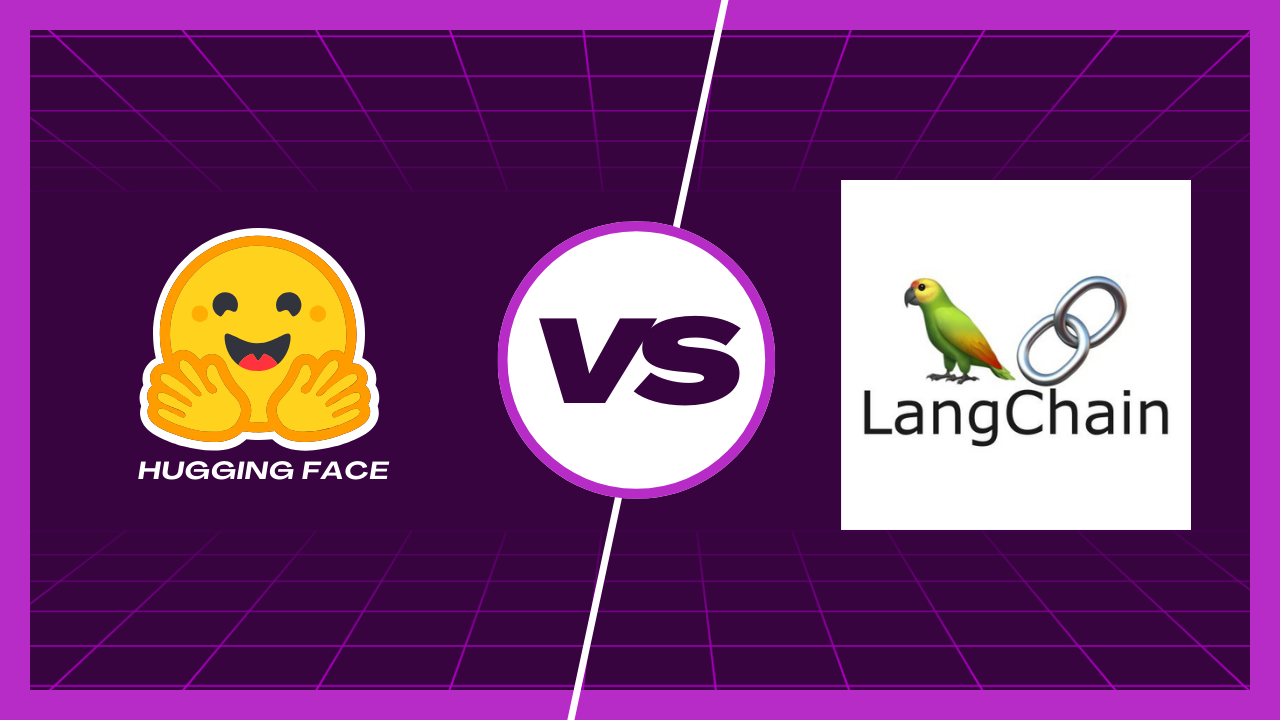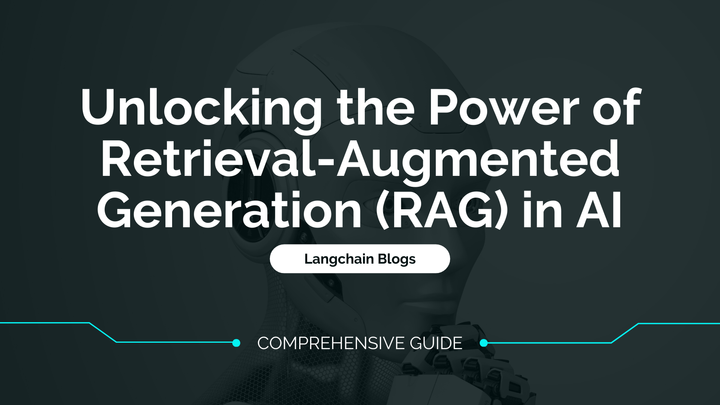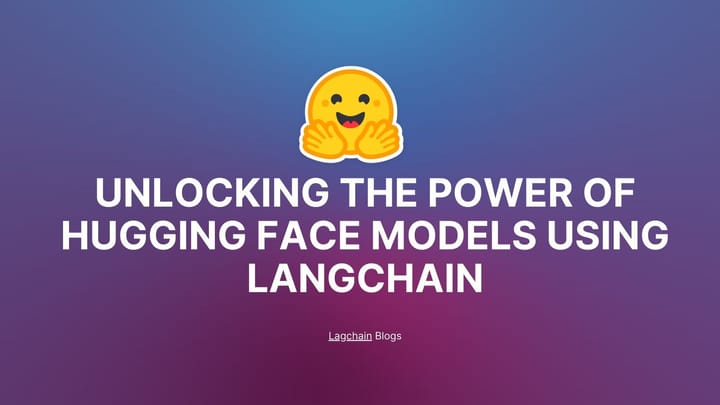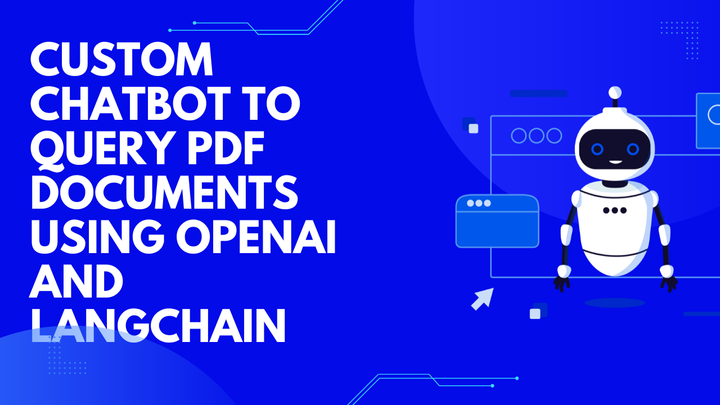Hugging Face VS Langchain: A Comparative Analysis

In the rapidly evolving landscape of Artificial Intelligence (AI), two names that frequently come up are Hugging Face and Langchain. These platforms have carved niches for themselves, offering unique capabilities that empower developers and researchers to push the boundaries of AI application development. Understanding what each platform brings to the table is essential for anyone looking to leverage AI in their projects.
Hugging Face has emerged as a frontrunner in the AI community, recognized for its vast repository of AI models. With a valuation soaring over $2 billion and a robust following of more than 16,000 on GitHub, its influence is undeniable. Hugging Face specializes in a wide array of AI models, including but not limited to image-to-text, text-to-speech, and even PAX to image conversions. Its platform hosts an impressive collection of over 200,000 different AI models, which are utilized by tech giants such as Google, Amazon, Microsoft, and Meta. This makes Hugging Face an indispensable resource for developers aiming to create sophisticated AI applications.
On the other side of the spectrum, Langchain offers a robust framework for integrating large language models (LLMs) into applications. It provides a seamless way to incorporate domain-specific chatbots, making it an invaluable tool for developers looking to enhance their applications with advanced conversational capabilities. By combining the open-source models from Hugging Face with the Langchain framework, developers can easily implement domain-specific chatbots, enhancing user interaction and engagement in their applications.
Both Hugging Face and Langchain are pivotal in the AI development ecosystem, each serving distinct purposes. Hugging Face acts as a treasure trove of AI models ready to be deployed, while Langchain offers the framework necessary for integrating these models into real-world applications. Together, they empower developers to create AI-driven applications with greater ease and flexibility than ever before.
Diving Deep into Hugging Face's Capabilities
The Hugging Face platform stands out in the AI community for its comprehensive suite of tools and models that cater to various aspects of AI development. From natural language processing (NLP) to computer vision, Hugging Face provides an end-to-end ecosystem that significantly accelerates the development of AI applications. Let's explore the core components that make Hugging Face an indispensable tool for developers and researchers alike.
Models: The Heart of Hugging Face
At the core of Hugging Face's offerings are its models. With an expansive library that includes the latest iterations of Huggingface GPT-4 and GPT-3, developers have access to state-of-the-art tools for text generation, comprehension, and more. The platform supports a diverse range of models, from the widely acclaimed Transformers to domain-specific models that cater to unique application needs. This wealth of resources opens up limitless possibilities for AI applications, from hugging face chat applications to advanced analytical tools.
Data: Fueling the AI Engine
Beyond models, Hugging Face excels in providing a rich repository of datasets. Whether you're training a new model from scratch or fine-tuning an existing one, the availability of quality data is crucial. Hugging Face's dataset library covers a broad spectrum of domains, ensuring that developers can find the right data for their projects. This component of the platform not only speeds up the development process but also enhances the accuracy and reliability of AI models.
Spaces: Collaborating and Showcasing AI Projects
Spaces on Hugging Face offer a unique environment for developers to showcase their AI applications. This collaborative platform encourages sharing, which in turn fosters innovation and learning. Whether you're looking for inspiration or aiming to demonstrate your latest project, Spaces serves as a vibrant community for AI enthusiasts. From hugging face examples to fully functional applications, Spaces provides a glimpse into the potential applications of Hugging Face's models and tools.
Integrating Hugging Face's capabilities into your AI projects not only unlocks new possibilities but also significantly reduces development time and costs. The platform's emphasis on accessibility and community support makes it a go-to resource for both novice and experienced developers. Whether you're experimenting with the hugging face tutorial for a simple project or deploying a complex AI solution, Hugging Face offers the tools and resources necessary to succeed.
Langchain: A Gateway to Advanced AI Implementations
Langchain stands out in the realm of AI development by offering a powerful framework designed to seamlessly integrate Large Language Models (LLMs) into a variety of applications. This innovative platform simplifies the creation of AI applications by providing a comprehensive set of tools that bridge the gap between complex language models and practical, real-world uses. Let's delve into the core functionalities that make Langchain a beacon for advanced AI implementations.
Seamless Integration with Open Source LLMs
The backbone of Langchain's utility lies in its ability to effortlessly incorporate open-source Large Language Models, such as those offered by Hugging Face. This integration enables developers to harness the power of cutting-edge linguistic models to build domain-specific chatbots and AI-driven applications. By leveraging Langchain, the complexity of model integration is significantly reduced, allowing for a more straightforward development process.
Advanced Components for Enhanced Functionality
Langchain distinguishes itself with a rich array of components that extend beyond simple model integration. These include embedding mechanisms, vector databases, and tools for feeding external documents to language models. Such components are crucial for developers aiming to create AI applications that can understand and interpret a wide range of data sources. By using Langchain, developers gain access to a toolkit that empowers them to build sophisticated, context-aware AI systems.
Streamlining the Development Process
One of the most significant advantages of using Langchain is the streamlined development process it offers. The platform provides clear documentation and easy-to-follow tutorials, making it accessible even for those new to the world of AI. Moreover, Langchain simplifies the deployment of AI models, allowing developers to focus on creating innovative applications without getting bogged down by the technical complexities of model training and integration.
Langchain's framework is designed with the future of AI in mind. It acknowledges the growing need for applications that can process and understand natural language at a deeper level. By providing an easy path for integrating LLMs, Langchain opens up a world of possibilities for developers looking to push the boundaries of what AI can achieve. Whether it's enhancing customer service with intelligent chatbots or analyzing vast datasets for actionable insights, Langchain serves as a gateway to advanced AI implementations.
In conclusion, Langchain offers a robust and comprehensive framework that simplifies the integration of Large Language Models into a variety of applications. Its focus on ease of use, combined with powerful components for enhanced functionality, makes it an invaluable tool for developers aiming to leverage the latest advancements in AI technology. As the AI landscape continues to evolve, platforms like Langchain play a crucial role in making sophisticated AI implementations more accessible and achievable.
Enhancing User Experience with AI: The Hugging Face and Langchain Synergy
The collaboration between Hugging Face and Langchain is not just about leveraging AI for the sake of technology. It's about enhancing the user experience, creating applications that are more intuitive, engaging, and responsive to user needs. By combining Hugging Face's diverse range of models with Langchain's seamless integration capabilities, developers can craft applications that truly stand out in terms of user interaction.
Personalized User Interactions
One of the remarkable benefits of integrating Hugging Face with Langchain is the ability to personalize user interactions. Imagine a chat application that not only understands the user's inquiries but also adapts its responses based on the user's preferences and past interactions. This level of personalization is made possible by Hugging Face's advanced NLP models, which can be smoothly integrated into applications via Langchain, offering a user experience that feels personal and engaging.
Enhanced Content Generation
Content generation is another area where the synergy between Hugging Face and Langchain shines. Whether it's generating creative stories, composing emails, or creating marketing copy, the combination of these platforms allows for the creation of rich, contextually relevant content. This capability can significantly enhance the user experience by providing content that is not only relevant but also tailored to the user's context and preferences.
Streamlined User Interactions
The integration of Hugging Face and Langchain also streamlines user interactions within applications. By understanding and processing natural language more efficiently, applications can offer quicker, more accurate responses to user queries. This efficiency reduces frustration and enhances the overall user experience, encouraging longer and more meaningful interactions with the application.
In summary, the combination of Hugging Face and Langchain offers a powerful toolkit for enhancing the user experience in AI applications. From personalized interactions to enhanced content generation, these platforms provide the capabilities needed to create applications that are not only technologically advanced but also deeply engaging and intuitive for users.
Future Directions: Evolving AI with Hugging Face and Langchain
As we look to the future, the collaboration between Hugging Face and Langchain represents a beacon for the evolution of AI development. The rapid advancements in AI and machine learning technologies promise even more sophisticated applications, and the synergy between these platforms positions them at the forefront of this evolution.
Advancements in AI Models
Continuous improvements and innovations in AI models are expected, with platforms like Hugging Face leading the charge. We can anticipate the development of even more advanced models that can handle complex tasks with greater accuracy and efficiency. These advancements will further enhance the capabilities of applications developed with Hugging Face and Langchain, making AI more powerful and accessible to developers.
Increased Accessibility and Integration
Langchain's focus on simplifying the integration of large language models into applications will continue to play a crucial role in making AI more accessible to developers. As the process becomes even more streamlined, we can expect a surge in AI-powered applications across various sectors, from healthcare to education and beyond. This increased accessibility will democratize AI development, enabling more developers to create impactful applications.
Expanding the Boundaries of AI Applications
The synergy between Hugging Face and Langchain not only enhances current AI capabilities but also expands the boundaries of what AI applications can achieve. As these platforms evolve, we can expect to see applications that not only understand and generate natural language but also exhibit advanced reasoning, emotional intelligence, and adaptability. This evolution will pave the way for AI applications that are more in tune with human needs and behaviors, creating unprecedented possibilities for interaction and engagement.
In conclusion, the road ahead for AI development is bright, with Hugging Face and Langchain playing pivotal roles. By continuously innovating and simplifying the integration of AI into applications, these platforms are setting the stage for a future where AI is not just a tool but a transformative force in technology and society.
Final Thoughts: The journey through the capabilities and synergies of Hugging Face and Langchain reveals a landscape rich with opportunities for innovation and impact. As we stand on the brink of the next wave of AI advancements, the collaboration between these platforms offers a glimpse into a future where AI is more integrated, intuitive, and impactful. The promise of enhanced user experiences, coupled with the excitement of evolving AI technologies, sets the stage for a thrilling chapter in the development of artificial intelligence.
FAQ's
1. How do you use Hugging Face models in LangChain?
LangChain allows you to integrate Hugging Face models into your natural language processing (NLP) workflows. There are two main approaches:
- Hugging Face Pipelines: This high-level approach lets you use pre-built wrappers for common tasks like sentiment analysis or question answering. LangChain can use these pipelines for specific steps within your NLP pipeline.
- Direct Model Loading: For more control, you can directly load Hugging Face models within LangChain. This involves handling preprocessing and postprocessing steps yourself.
2. How do you implement a Hugging Face model?
The implementation method depends on your chosen approach:
- Pipelines: Import the
pipelinefunction from Transformers and define the task and model you want to use. LangChain can then interact with the pipeline for predictions. - Direct Loading: Use libraries like
AutoTokenizerandAutoModelFor...to load the model and tokenizer from Hugging Face. Preprocess your data, feed it to the model, and interpret the output within your LangChain code.
3. Does Hugging Face have its own models?
No, Hugging Face doesn't create its own models from scratch. It provides a central hub for accessing and sharing a vast collection of pre-trained models from various sources and for different NLP tasks. These models are created by researchers and the Hugging Face community.
4. Do Hugging Face models run locally?
Yes, Hugging Face models can run locally. When using pipelines or directly loading models, you download the necessary weights to your machine. This allows you to use the models without an internet connection.
5. What is the full form of LLM in LangChain?
LLM in LangChain can stand for "Large Language Model." LangChain can integrate with various LLMs, including those available through Hugging Face.
6. Where does Hugging Face store models?
Hugging Face models are stored in a central repository called the Hugging Face Model Hub. This allows users to easily discover, share, and download pre-trained models for various NLP tasks.
7. How do I use Hugging Face models offline?
As mentioned earlier, once you download the required model weights for pipelines or direct loading, you can use them offline. No internet connection is necessary for prediction after the initial download.
8. What is the difference between LangChain and Hugging Face pipeline?
LangChain is a framework for building NLP pipelines. It offers tools for data processing, model integration (including Hugging Face models), and workflow management. Hugging Face pipelines are pre-built wrappers for specific NLP tasks that can be used within LangChain or other environments.
9. Can I use my own LLM with LangChain?
Yes, LangChain is flexible and allows you to integrate your custom LLM alongside Hugging Face models or other NLP components. You'll need to handle the model loading and interaction within your LangChain code.
10. Does LangChain work locally?
Yes, LangChain can work locally. You'll need to ensure any models you use (including Hugging Face models downloaded locally) are available on your machine.


